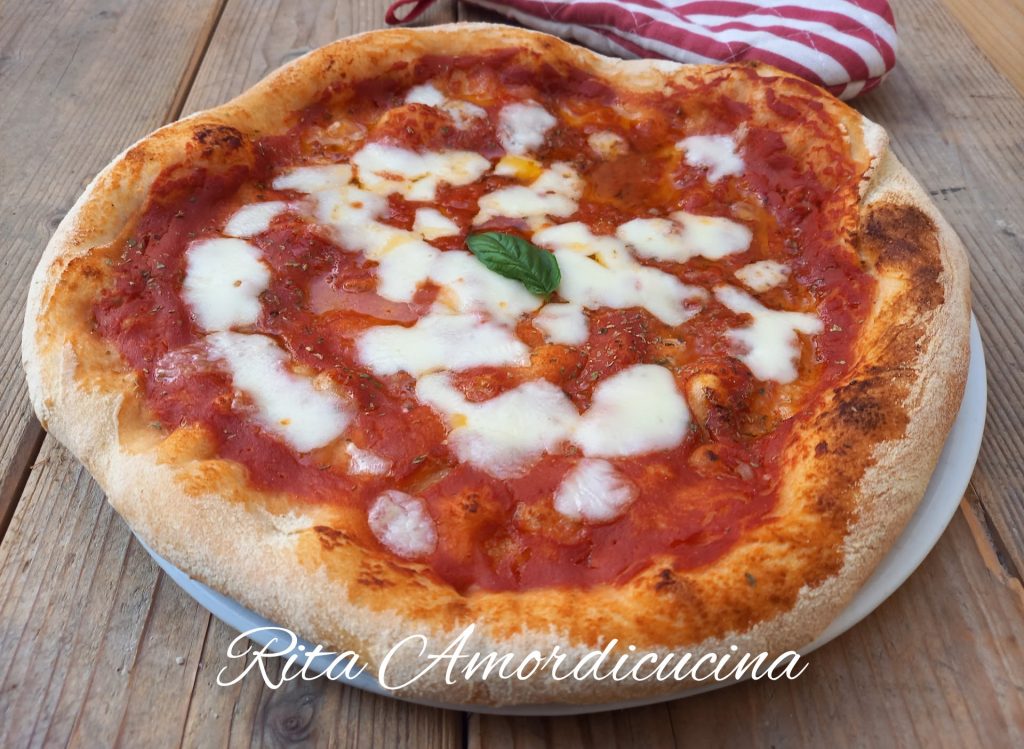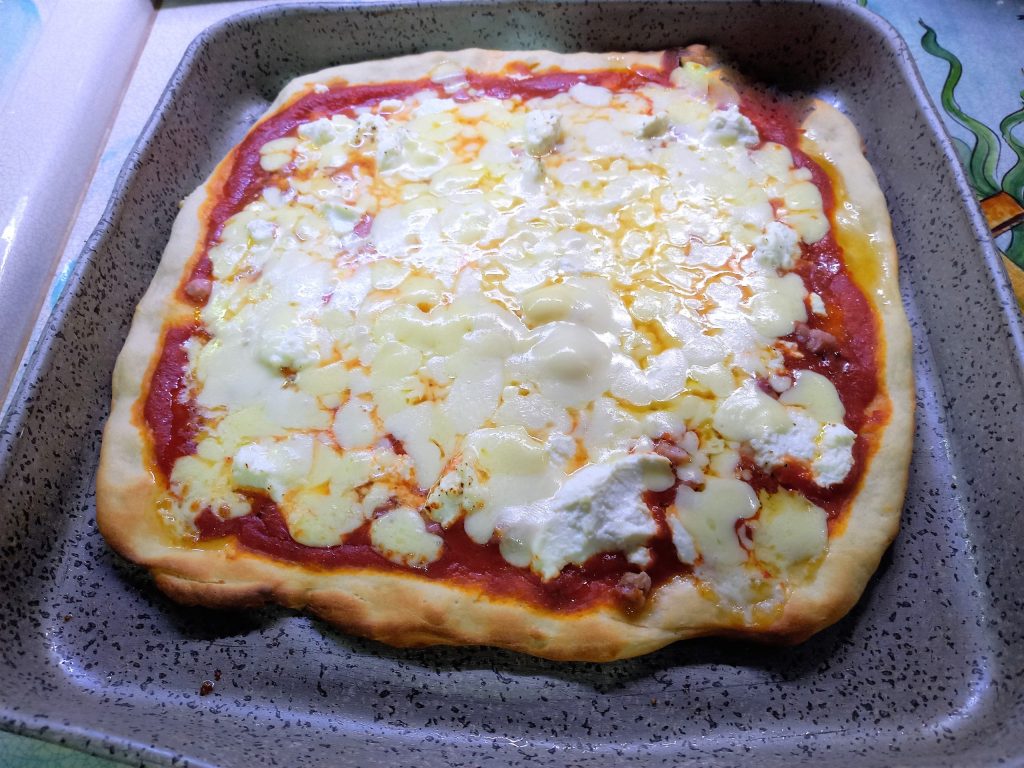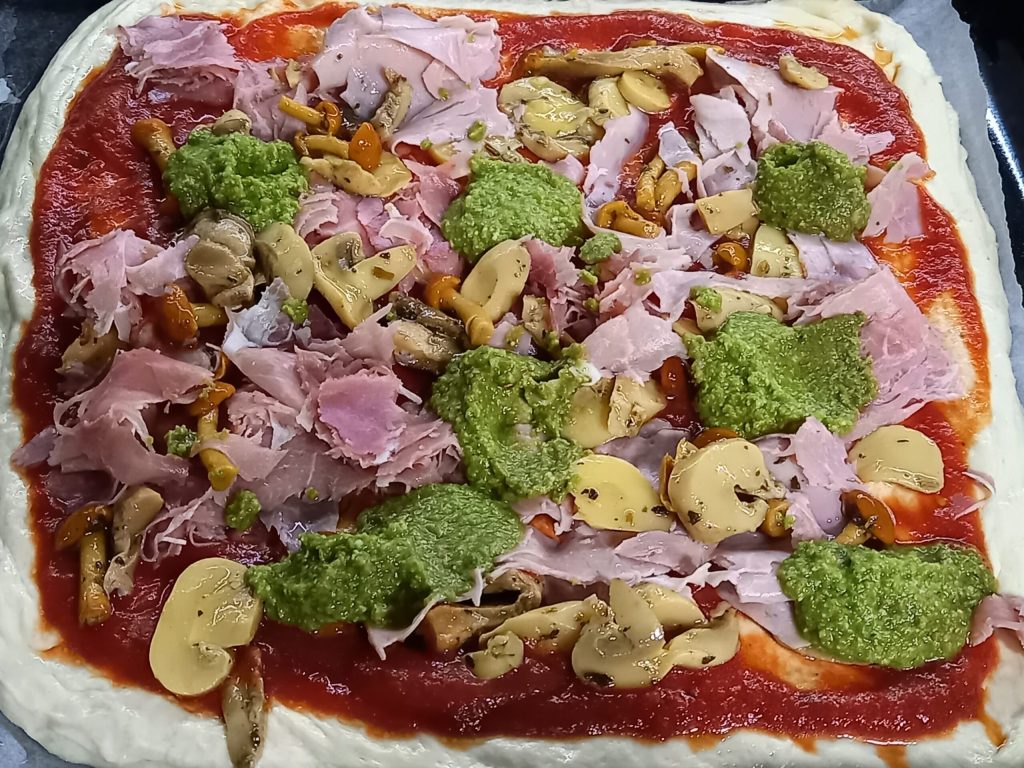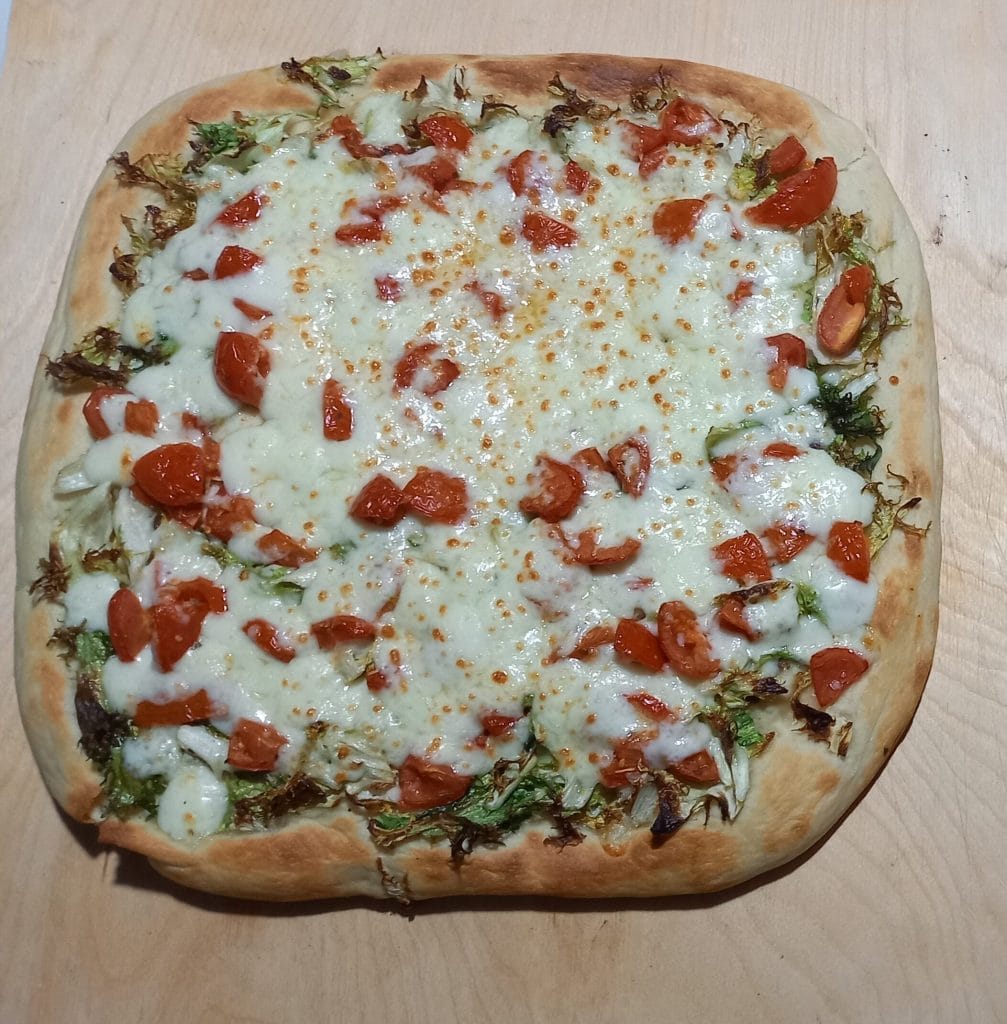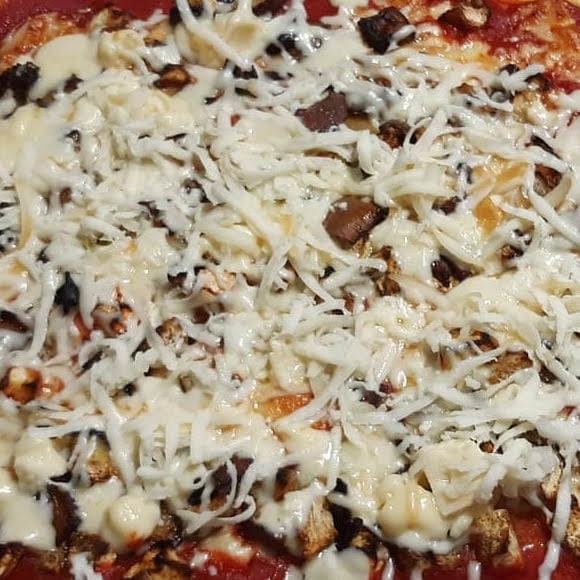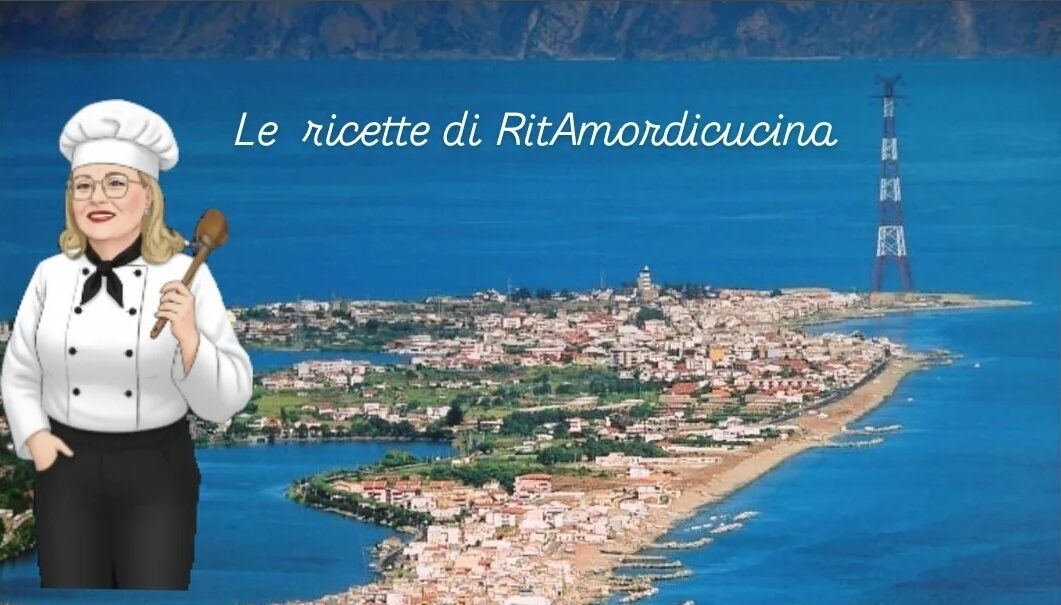The Roman Pinsa
Traditional Recipe and with Bimby.
A light and digestible delicacy that has now become popular in all pizzerias and pinseries. It differs from pizza in the composition of the flours used: for pinza a mixture of durum wheat, rice, and soy flour, while for pizza only wheat flour.
For topping, leave room for your imagination, taking inspiration from my pizzas, Margherita, norma, etc.
This dough requires a long leavening time ranging from 24 to 48 hours, half of which should be in the fridge.
The dough thus made is very digestible also because of its high hydration and the little yeast we will use to prepare it.
You might also be interested in:
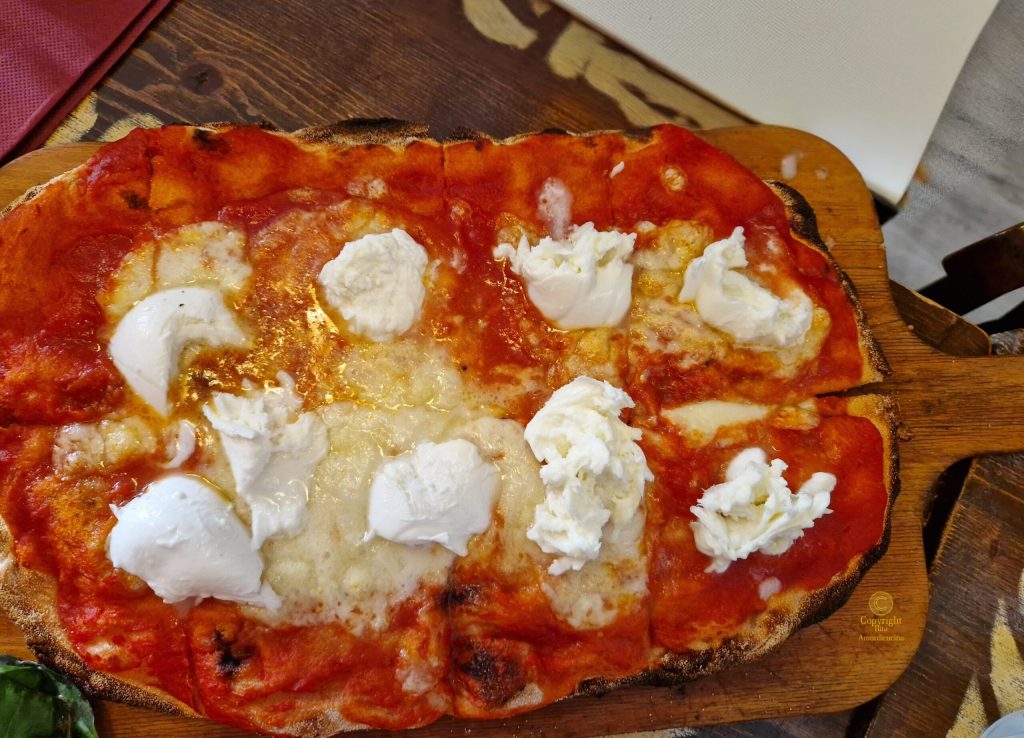
- Difficulty: Medium
- Cost: Very economical
- Rest time: 2 Days 6 Hours
- Preparation time: 30 Minutes
- Portions: 4
- Cooking methods: Oven
- Cuisine: Italian Regional
- Region: Lazio
- Seasonality: All seasons
- Energy 657.04 (Kcal)
- Carbohydrates 138.78 (g) of which sugars 2.19 (g)
- Proteins 19.01 (g)
- Fat 7.32 (g) of which saturated 1.27 (g)of which unsaturated 2.58 (g)
- Fibers 24.22 (g)
- Sodium 1,464.09 (mg)
Indicative values for a portion of 300 g processed in an automated way starting from the nutritional information available on the CREA* and FoodData Central** databases. It is not food and / or nutritional advice.
* CREATES Food and Nutrition Research Center: https://www.crea.gov.it/alimenti-e-nutrizione https://www.alimentinutrizione.it ** U.S. Department of Agriculture, Agricultural Research Service. FoodData Central, 2019. https://fdc.nal.usda.gov
Ingredients
Let’s go shopping to make the
- 24.5 oz flour (for pinza)
- 1 tsp fresh yeast
- 2 1/8 cups water (iced)
- 1 tbsp fine salt
- 1 tbsp extra virgin olive oil
- as needed durum wheat flour (semolina for dusting)
The Roman Pinsa
Tools
What we need to make a good
- 1 Bowl large
- 1 Stand mixer or Bimby
Steps
Let’s start cooking
If you want to knead with the stand mixer, you can follow the steps for bowl processing.
In a nice large bowl pour the pinza flour, then the crumbled fresh yeast, then pour 450 g of water little by little and mix, until completely absorbed
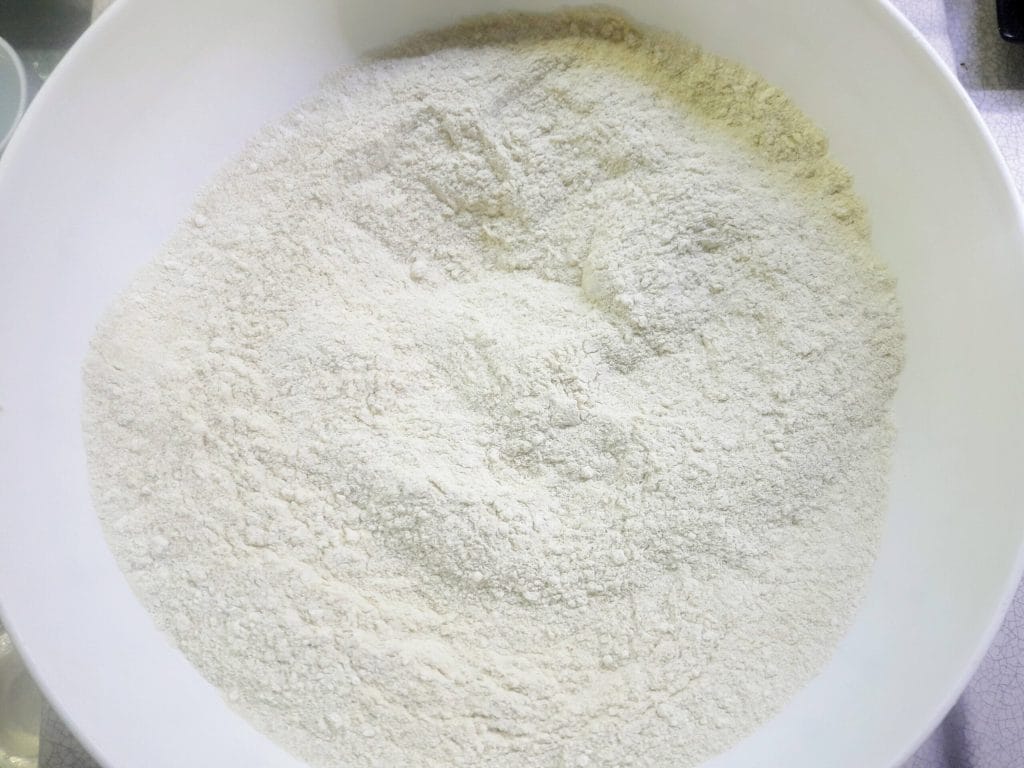
At this point, transfer the dough to a work surface, without adding more flour, and start kneading.
Initially, the dough will look rough, do not worry it’s all okay.
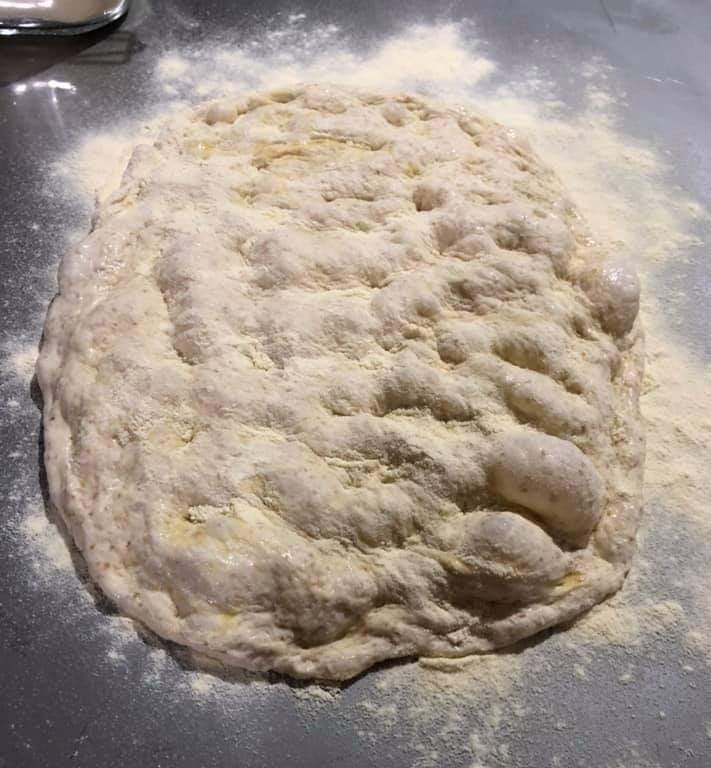
You have to work the dough quite a bit and you will see that little by little, you will get a smoother and rather compact dough
Transfer the dough to a bowl and make a cross incision with the knife that will help with leavening and to allow the other ingredients to penetrate well

Now pour in the salt, the oil, and the rest of the cold water, 50 g, little by little while kneading.
Always knead by hand in the bowl for a few minutes to absorb well.
If you prefer, you can continue on the work surface, giving reinforcement folds.

Stretch and then fold the dough over itself several times
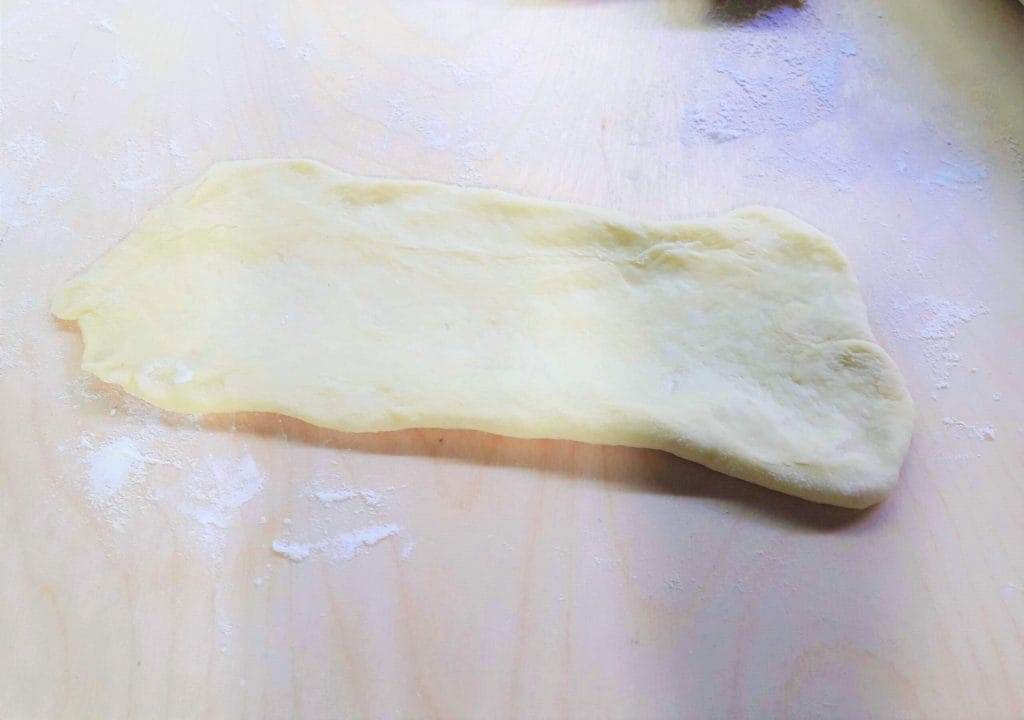
Now cover with a cloth and let rest for 20 minutes

After the time, flour the work surface, flip the dough over it, and give more folds:
take the edge of the dough one by one and bring it back to the center.
Then turn upside down and form a ball, rolling on the base to seal the closure well.
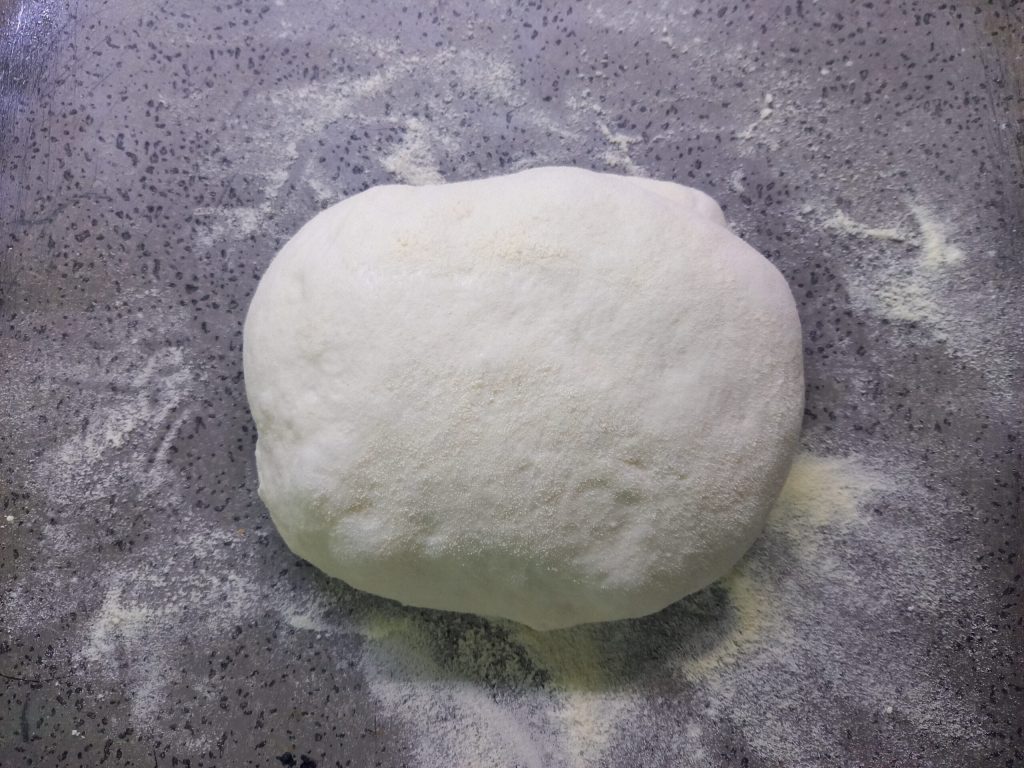
Oil a bowl and place the dough in it. Cover with plastic wrap and leave at room temperature for 2 hours. Then transfer to the fridge for 24 to 48 hours.
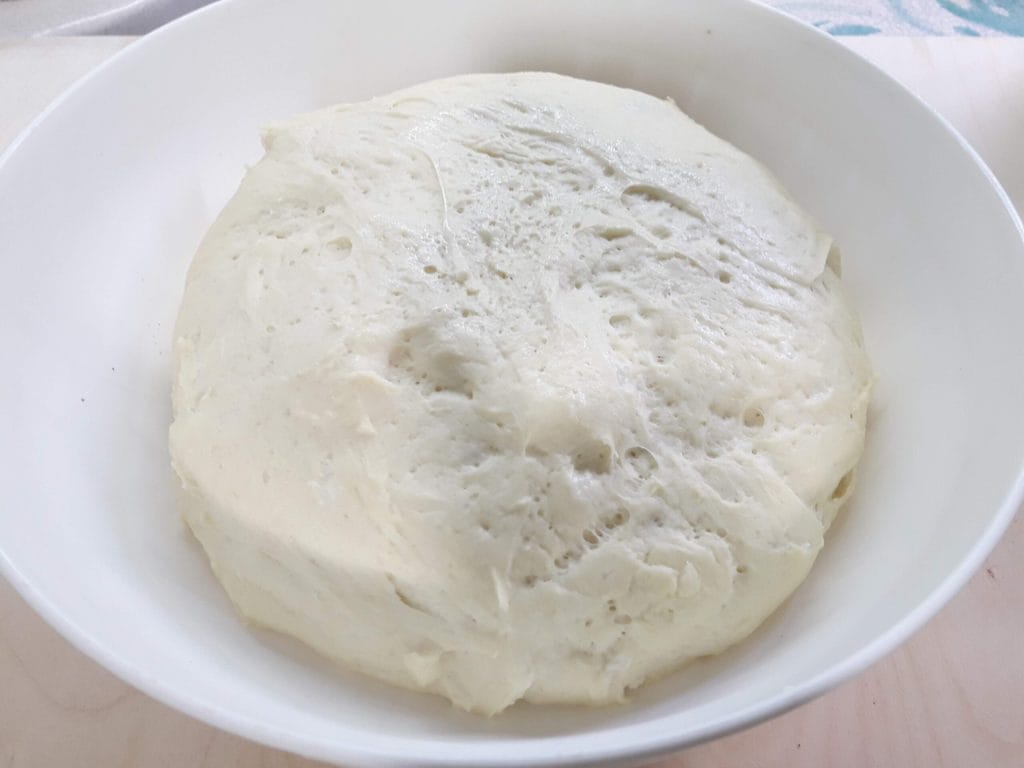
As soon as you take it back, it will be very swollen and full of bubbles.
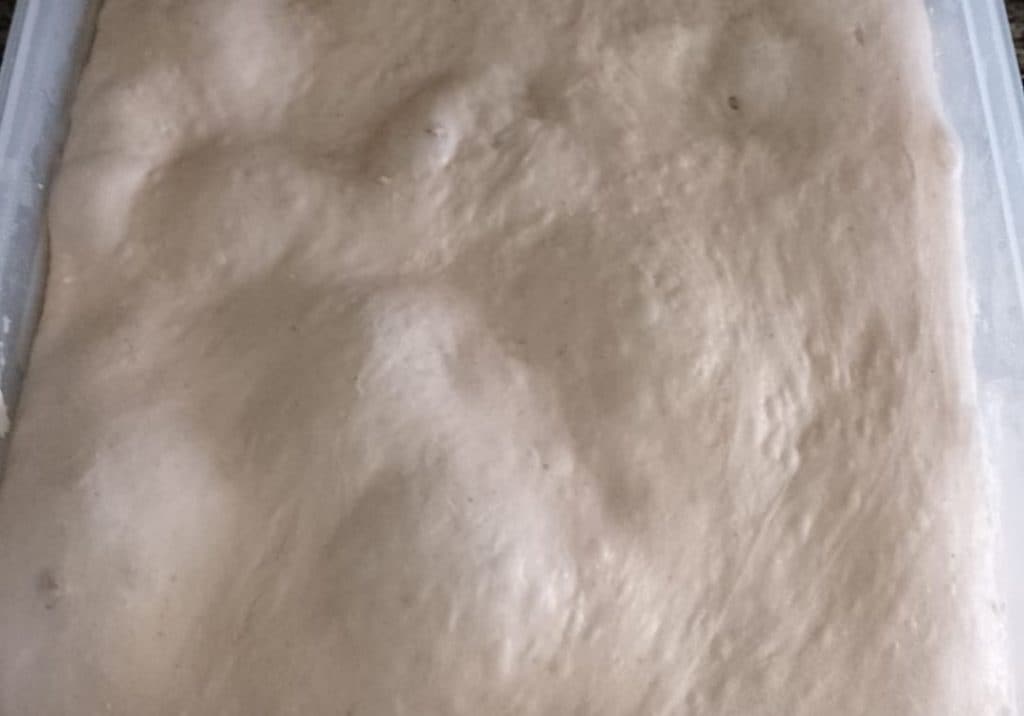
With wet hands, pinch the 4 pinzas, squeezing each piece as if they were mozzarella, and place it on the semolina, then form a ball like a bun forming folds and then rolling well at the joint of the folds.

Then put the rolled part on the work surface and form a ball by rotating the hand on each piece of dough. Form the 4 balls of pinza and leave them to rise with plastic wrap on top.
It will take about 3-4 hours at room temperature for the doubling.
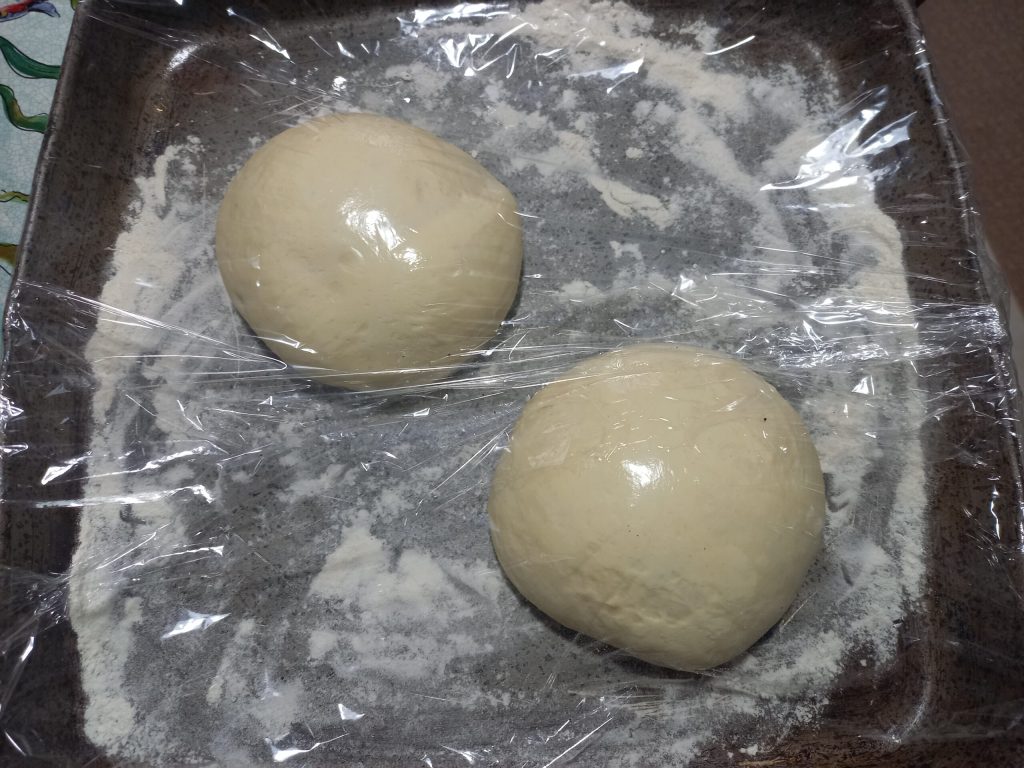
After the last leavening, take the first pinza and spread it on the work surface with plenty of semolina around, with fingertips starting from the center to reach 1 cm from the edge, giving an oval shape

I used the home oven, so I transferred the pinzas to a non-stick tray and seasoned them there, without putting in the mozzarella immediately, but adding it in the last 2 minutes

I put the oven at maximum power on pizza mode, which means only the bottom on.
I baked the pinza for 5 minutes then took it out and added the mozzarella, then moved it to the grill at maximum power for another 2 minutes.
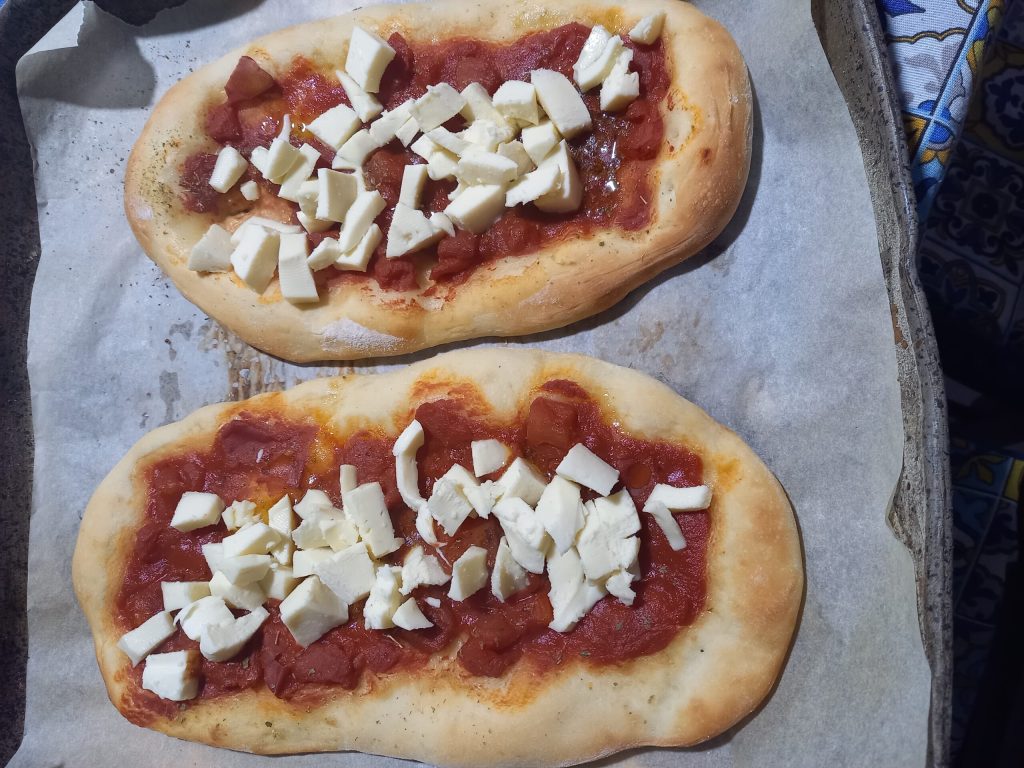
If you want to use a baking stone instead, you need to heat it at least 1 hour before.
This is how it looks with wood-fired oven cooking.

Cut a sheet of parchment paper the same size as the base of the Varoma container, place it inside, and grease it with a little extra virgin olive oil.
Put water and yeast in the jug, mix: 1 min./speed 1.
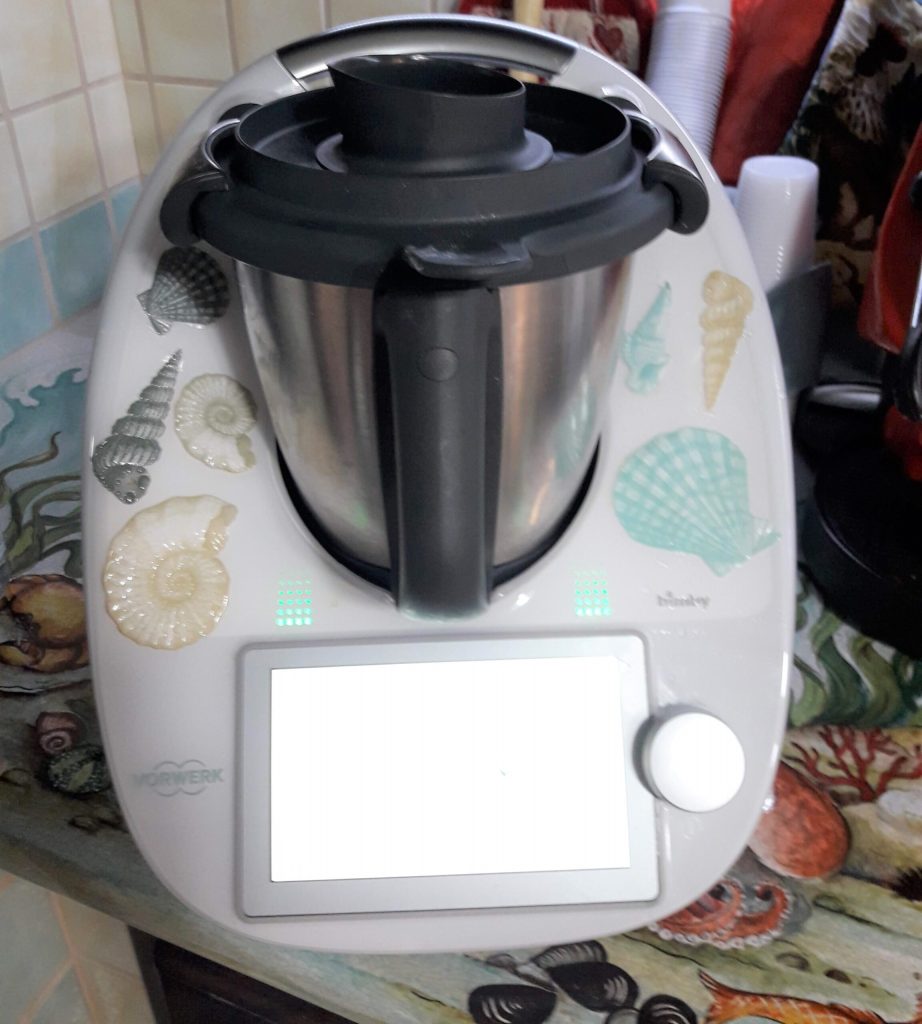
Add flour, extra virgin olive oil, and salt, knead: 15 min./spiga.
Transfer the dough to the work surface, compact it into a loaf, and place it in the Varoma container. Close the Varoma with the lid and set aside.

Pour 1000 g of water into the jug and set Cleaning Dough, then empty the jug. Put 250 g of water in the jug, position the Varoma and set Fermentation /3 h/98.6°F. Carefully remove the Varoma, and….
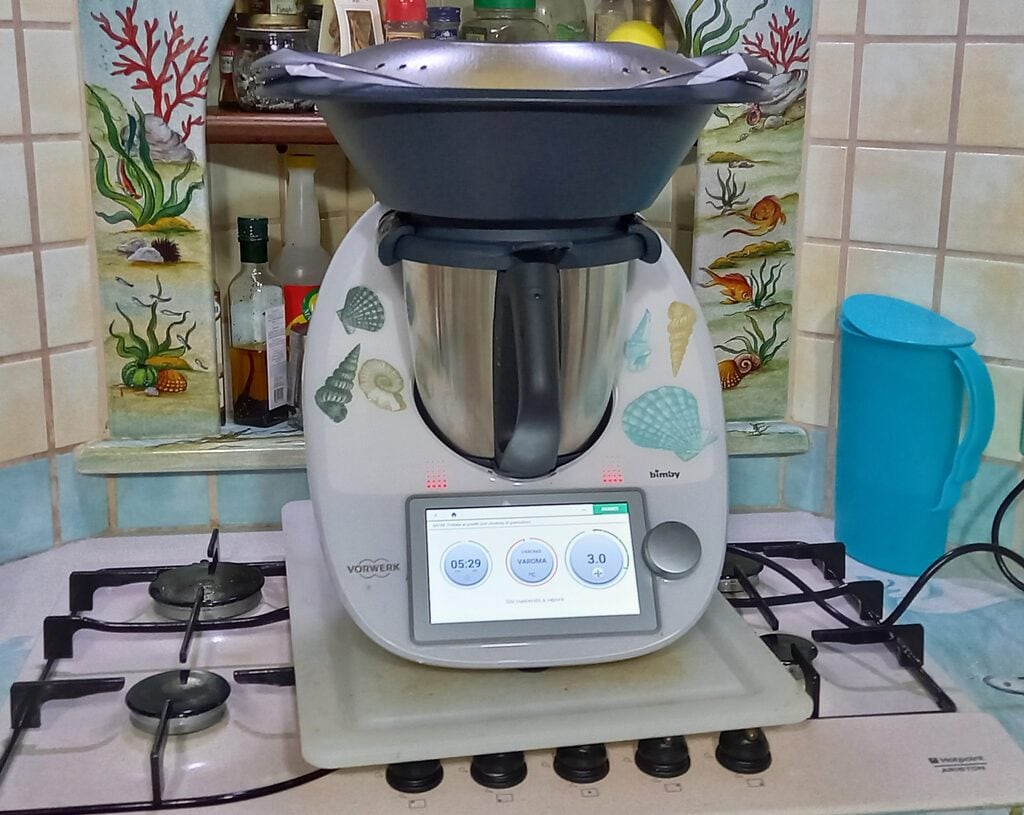
continue the recipe from step 6.
By following the right instructions you will be able to make the best Roman pinza in the world.
This is how it looks with home electric oven cooking.

full view

With avocado, olives, and vegetables
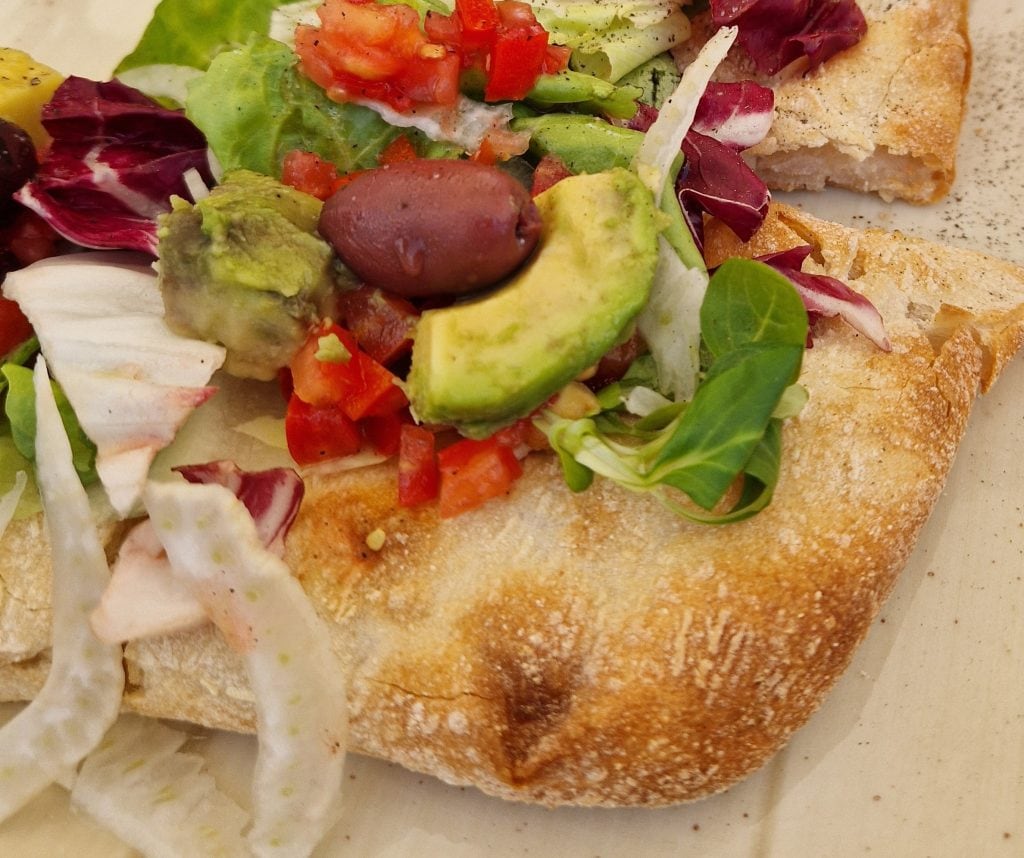
with speck and potatoes
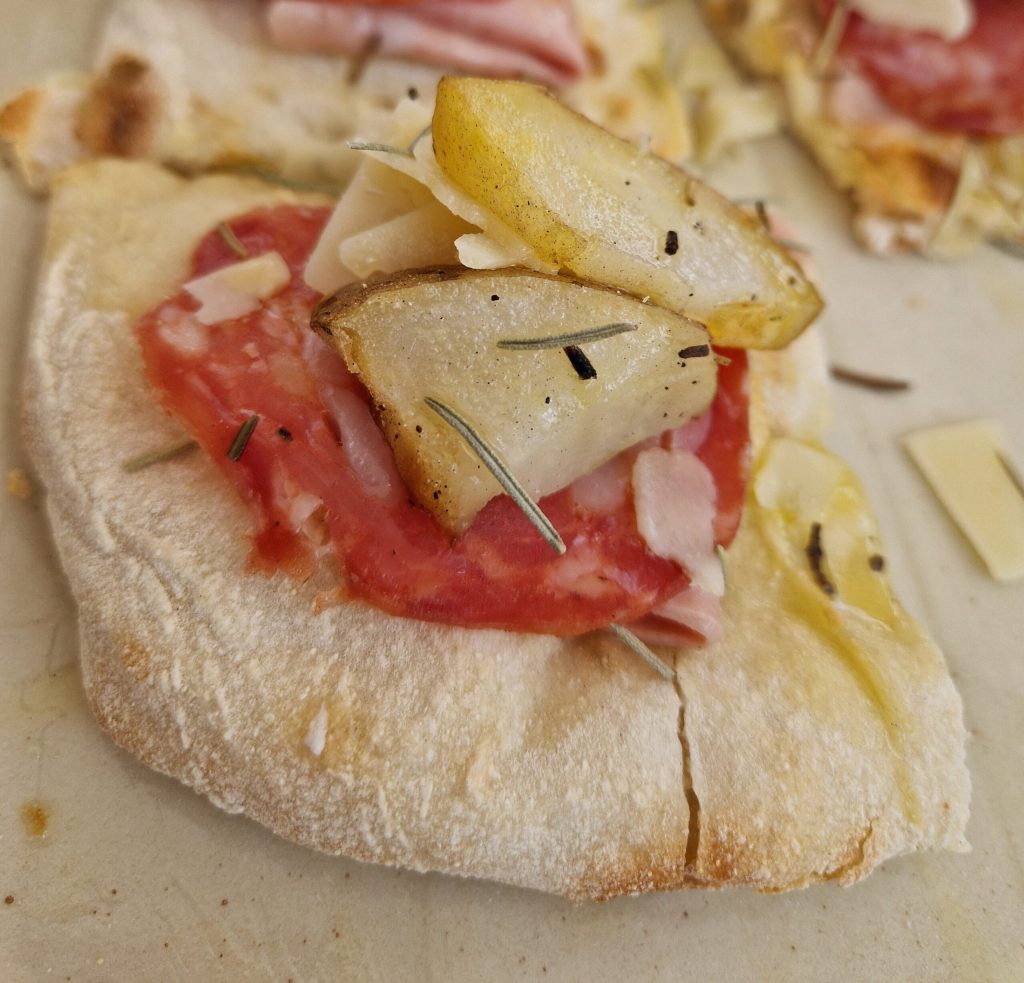
Notes
The Roman pinza to come out well must necessarily be made with its suitable flour blend.

